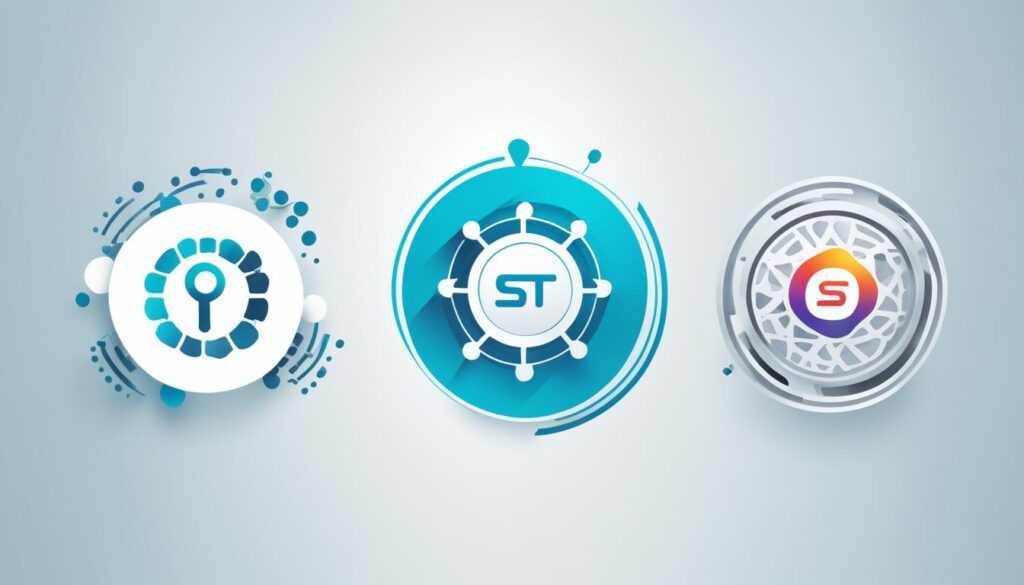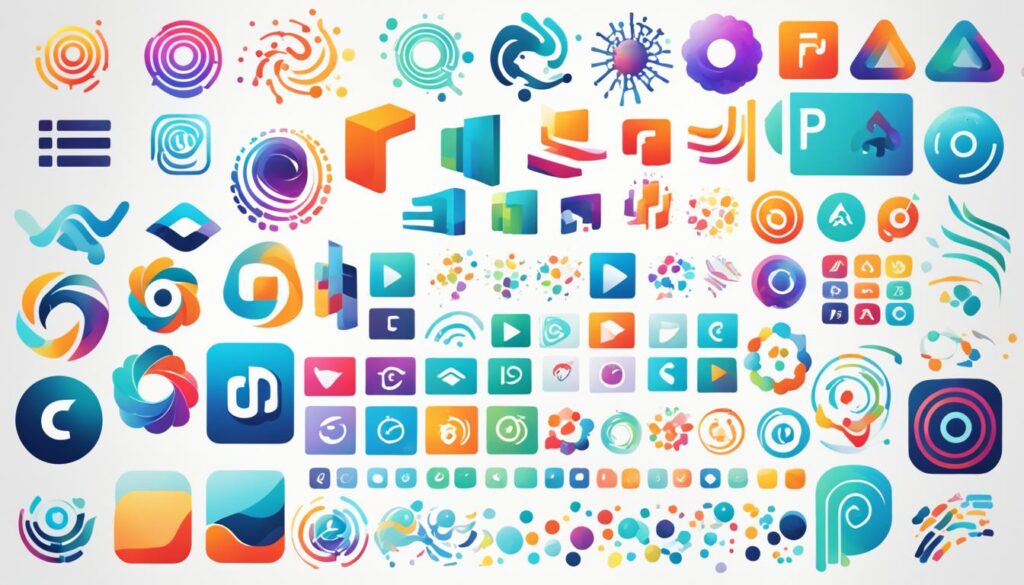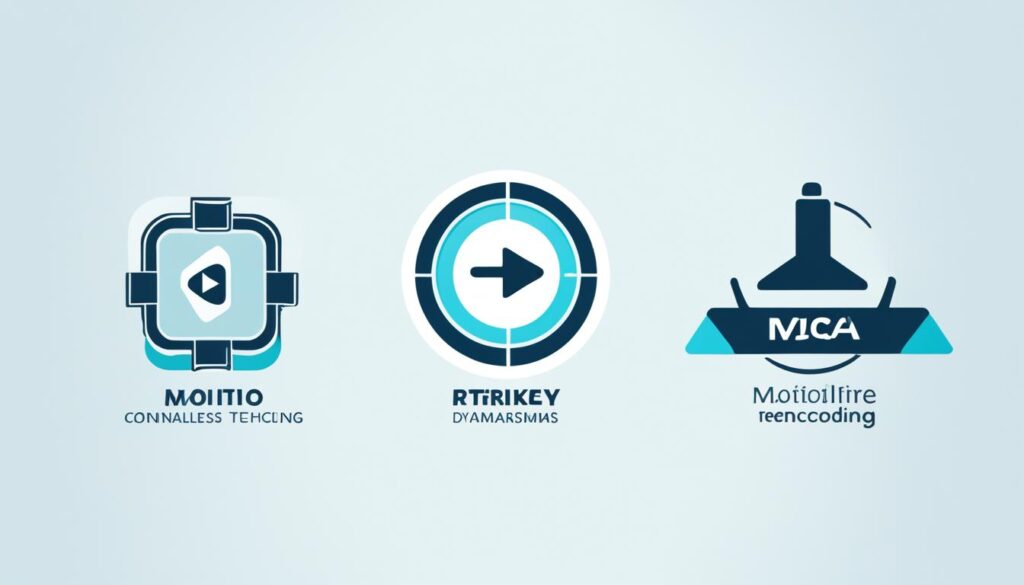Did you know that IPTV streaming has revolutionized the way we consume digital video content? With the rise in internet protocol television, more and more viewers are turning to streaming platforms for their entertainment needs.
Understanding IPTV protocols is essential for optimizing the streaming experience. In this article, we will explore the functionalities and considerations of three popular protocols: RTSP, HLS, and MPEG-DASH.
Key Takeaways:
- IPTV streaming has transformed the digital video delivery landscape.
- RTSP, HLS, and MPEG-DASH are three commonly used protocols in IPTV streaming.
- Each protocol has its own advantages and use cases.
- Factors such as latency, compatibility, scalability, and network conditions should be considered when choosing a streaming protocol.
- BestIPTVshop’s IPTV subscription services offer a wide range of channels and content for an enhanced viewing experience.
What Is a Protocol and a Streaming Protocol?
When it comes to video streaming, protocols play a crucial role in transmitting and delivering data over the internet. In simple terms, a protocol is a set of rules that govern how data travels from one system to another. In the context of video streaming, streaming protocols specifically dictate how video content is transmitted and received by viewers.
Imagine a streaming protocol as a language that allows devices to communicate with each other effectively. It ensures that the video data is packaged, sent, and received correctly, resulting in a seamless streaming experience for the end user.
There are several streaming protocols in use today, each with its own unique characteristics and functionalities. These protocols work together with other components of the streaming ecosystem, such as servers, encoding formats, and playback devices, to ensure smooth and reliable video playback over the internet.
Understanding Video Streaming Protocols
Let’s take a closer look at the two main components mentioned earlier: protocols and streaming protocols.
| Protocol | Streaming Protocol |
|---|---|
| A set of rules governing data transmission between systems. | A subset of protocols specifically designed for video streaming. |
| Can be used for various purposes including file transfer, email communication, and web browsing. | Primarily used for delivering video content over the internet. |
| Examples: TCP/IP, HTTP, FTP | Examples: RTSP, HLS, MPEG-DASH |
As we can see, a streaming protocol is a specialized type of protocol that focuses on the delivery of video content. While there are various protocols used for different purposes, streaming protocols are specifically designed to optimize the transmission of video data and ensure a smooth playback experience for viewers.
Now that we have a basic understanding of protocols and streaming protocols, let’s dive deeper into the most common protocols used in video streaming in the next section.
What Are the Most Common Protocols for Video Streaming?
When it comes to video streaming, various protocols are used to deliver content over the internet. Understanding the most common protocols is essential for optimizing the streaming experience. Let’s explore the protocols commonly used in video streaming:
1. Traditional Protocols:
- RTMP (Real-Time Messaging Protocol): Developed by Adobe, RTMP is used for low-latency streaming. It is commonly used for live streaming and interactive applications.
- RTSP (Real-Time Streaming Protocol): RTSP is a network control protocol used to control streaming media servers. It is commonly used for IP cameras and control systems.
2. HTTP-Based Adaptive Protocols:
- Apple HLS (HTTP Live Streaming): HLS is an adaptive streaming protocol developed by Apple. It segments video content into small files, allowing for adaptive bitrate streaming and better viewing experience.
- MPEG-DASH (Dynamic Adaptive Streaming over HTTP): MPEG-DASH is an adaptive streaming protocol that uses standard HTTP servers for video delivery. It provides better scalability and compatibility across devices.
3. New Technologies:
- SRT (Secure Reliable Transport): SRT is an open-source streaming protocol that ensures reliable delivery of video streams over unpredictable networks. It provides low-latency and secure streaming.
- WebRTC (Web Real-Time Communication): WebRTC enables real-time peer-to-peer communication in web browsers, including browser-based video streaming.
Each protocol has its own characteristics and use cases, depending on factors such as latency requirements, device compatibility, and network conditions. Now that we have covered the common protocols, let’s proceed to explore traditional video streaming protocols in more detail.
Understanding Traditional Video Streaming Protocols
When it comes to video streaming, traditional protocols like RTMP (Real-Time Messaging Protocol) and RTSP (Real-Time Streaming Protocol) have long been the go-to choices for low-latency streaming. While they offer efficient delivery of video content, it’s important to note that these protocols are not natively supported on most endpoints.
RTMP, originally developed by Macromedia (now Adobe), is widely used for live streaming and on-demand video playback. It enables real-time interaction between the client and server, making it ideal for applications that require low-latency communication. However, modern platforms and devices are gradually phasing out support for RTMP.
On the other hand, RTSP, developed by the Internet Engineering Task Force (IETF), focuses on controlling the delivery of multimedia data through a client-server architecture. It provides reliable and efficient transport of audio and video streams, making it suitable for IP cameras, encoders, and dedicated media servers. However, RTSP is primarily used in closed-circuit applications and may face compatibility issues with popular streaming platforms.
While both RTMP and RTSP have their merits in specific use cases, it’s essential to consider the evolving landscape of video streaming protocols and their overall compatibility with the devices and platforms used by your target audience. In the next sections, we will explore other protocols such as HTTP-based adaptive protocols like Apple HLS and MPEG-DASH and new technologies like SRT and WebRTC that offer alternative solutions for a wide range of streaming requirements.

Exploring HTTP-Based Adaptive Protocols
When it comes to optimizing the viewing experience in online video streaming, HTTP-based adaptive protocols like Apple HLS and MPEG-DASH have revolutionized the industry. These protocols enable seamless video playback by dynamically adjusting the video quality according to the viewer’s network conditions.
HTTP-based adaptive protocols have gained widespread adoption due to their compatibility with various devices and streaming platforms. This versatility allows content providers to reach a larger audience, cater to different network speeds, and provide a consistent streaming experience across multiple screens.
Apple HLS
Apple HLS (HTTP Live Streaming) is a widely used adaptive streaming protocol developed by Apple Inc. It enables efficient video delivery by dividing the content into small segments that can be easily transmitted and buffered. This approach allows HLS to adapt to changing network conditions, ensuring smooth playback on iOS devices, macOS, and other platforms that support HLS.
One of the key advantages of Apple HLS is its compatibility with existing HTTP infrastructure, making it easier to integrate into existing content delivery networks (CDNs) and media servers. This enables seamless integration into the existing ecosystem, reducing implementation costs and improving scalability.
With Apple HLS, content providers can deliver high-quality video with adaptive bitrate streaming, providing the best possible viewing experience for viewers regardless of their network conditions.
MPEG-DASH
MPEG-DASH (Dynamic Adaptive Streaming over HTTP) is an industry-standard adaptive streaming protocol supported by a variety of devices, including smart TVs, gaming consoles, and mobile devices. It was developed by the Moving Picture Experts Group (MPEG) to provide a standardized approach to adaptive streaming.
MPEG-DASH works by dividing the video content into small segments, similar to Apple HLS. These segments are encoded at different bitrates and resolutions, allowing the player to dynamically adapt to varying network conditions. This ensures smooth playback and minimizes buffering, providing viewers with an uninterrupted streaming experience.
MPEG-DASH offers wide compatibility, making it an ideal choice for content providers looking to reach a diverse range of devices and platforms. It also supports various audio and video codecs, providing flexibility in content encoding. Additionally, MPEG-DASH offers enhanced features such as support for advanced metadata, subtitles, and multiple audio tracks, enabling a more immersive viewing experience.
HTTP-based adaptive protocols like Apple HLS and MPEG-DASH have revolutionized the way video content is delivered over the internet. By adapting the video quality based on the viewer’s network conditions, these protocols ensure a seamless and optimized viewing experience across devices and platforms.
Next, we will explore the latest technologies in video streaming, such as SRT and WebRTC, which offer innovative solutions for low-latency streaming and real-time communications.
Discovering New Technologies in Video Streaming
New technologies in video streaming, such as SRT and WebRTC, offer innovative solutions for low-latency streaming and real-time communications. SRT, or Secure Reliable Transport, utilizes UDP for reliable delivery in unmanaged networks. It enhances the streaming experience by ensuring data integrity and minimizing buffering issues, making it ideal for applications that require real-time video transmission.
On the other hand, WebRTC, or Web Real-Time Communication, enables browser-based video streaming and communication. This technology eliminates the need for plugins or additional software installations, making it convenient and accessible for users across various devices and platforms. WebRTC is widely used for applications like video conferencing, live broadcasting, and interactive video streaming.
Both SRT and WebRTC have contributed to the advancement of video streaming technologies, providing seamless and efficient streaming experiences for users worldwide.

The Advantages of SRT in Video Streaming:
- Reliable delivery in unmanaged networks
- Minimized buffering and latency
- Enhanced data integrity and security
The Benefits of WebRTC in Video Streaming:
- Browser-based streaming without additional software
- Cross-platform compatibility
- Real-time communication and collaboration
Considerations When Choosing a Video Streaming Protocol
When it comes to selecting a video streaming protocol, it’s crucial to take several factors into consideration. Each protocol has its strengths and weaknesses, and understanding these considerations will help you make an informed decision for your specific use case.
- Latency Requirements: Consider the latency requirements of your streaming content. Some protocols, like Real-Time Streaming Protocol (RTSP), offer low-latency streaming that is ideal for applications requiring real-time interaction, such as video conferencing or surveillance systems.
- Device Compatibility: Ensure that your chosen streaming protocol is compatible with the devices your audience will be using to consume the content. HTTP-based adaptive protocols like Apple HLS and MPEG-DASH have broad device support, making them suitable for delivering video to various platforms and devices.
- Scalability: Evaluate the scalability of the protocol you choose. Will it be able to handle increasing audience sizes without compromising the streaming quality? Protocols like MPEG-DASH offer adaptive video streaming, which optimizes the viewing experience by adjusting video quality based on viewers’ network conditions.
- Network Conditions: Consider the network conditions that your viewers may experience. Some protocols, such as SRT (Secure Reliable Transport), are designed to deliver reliable video streaming even in unreliable networks, ensuring a seamless playback experience.
To help you visualize the differences between these video streaming protocols, here’s a comparison table:
| Protocol | Latency | Device Compatibility | Scalability | Network Conditions |
|---|---|---|---|---|
| RTSP | Low latency | Requires specialized media players | Limited scalability | Dependent on network conditions |
| Apple HLS | Medium latency | Broad device support | High scalability | Tolerant to unstable networks |
| MPEG-DASH | Medium latency | Broad device support | High scalability | Tolerant to unstable networks |
| SRT | Variable latency | Broad device support | High scalability | Optimized for unstable networks |
By considering these factors and comparing the features of different video streaming protocols, you can select the one that best aligns with your specific requirements and constraints. Making an informed decision will ultimately result in an optimized streaming experience for both you and your viewers.

Conclusion
In conclusion, understanding the different IPTV protocols, such as RTSP, HLS, and MPEG-DASH, is essential for optimizing the streaming experience. Each protocol brings its own set of advantages and use cases, catering to specific requirements in the world of video streaming.
RTSP, or Real-Time Streaming Protocol, allows for low-latency streaming but is primarily suited for dedicated media servers and IP cameras. It provides reliable communication between these devices, ensuring smooth transmission of video content.
HLS, or HTTP Live Streaming, and MPEG-DASH, or Dynamic Adaptive Streaming over HTTP, are HTTP-based adaptive protocols that dynamically adjust the video quality based on the viewer’s network conditions. These protocols are widely supported on various devices and provide scalability for large audiences.
When choosing a video streaming protocol, it is crucial to consider factors such as latency requirements, device compatibility, scalability, and network conditions. By taking these into account, content providers and streaming platforms can make informed decisions to deliver an optimal viewing experience.
With a solid understanding of IPTV protocols, content providers can select the most suitable protocol or combination of protocols to meet their specific needs. Whether it’s delivering live sports events, on-demand movies, or interactive video content, the right protocols lay the foundation for seamless and enjoyable streaming experiences.
Unlock Endless Entertainment with BestIPTVshop’s IPTV Subscription Services
Don’t miss out on the ultimate entertainment solution with BestIPTVshop’s IPTV subscription services. Starting at just $11.99, you can elevate your viewing experience with a diverse range of channels and content.
With BestIPTVshop, you can enjoy high-quality streaming that is tailored to your preferences. Whether you’re a sports enthusiast, a fan of movies and series, or looking for international channels, our IPTV subscription services have got you covered.
Immerse yourself in a world of seamless streaming bliss. With our IPTV subscriptions, you can access your favorite shows, movies, and live events anytime, anywhere. No more cable restrictions or limited content options.
BestIPTVshop offers a user-friendly interface, reliable service, and exceptional customer support to ensure your entertainment needs are met. Our subscriptions are compatible with a wide range of devices, including smart TVs, smartphones, tablets, and streaming devices.
Subscribe now and unlock endless entertainment possibilities with BestIPTVshop’s IPTV subscription services. Join the thousands of satisfied customers who have already elevated their viewing experience with us.

At BestIPTVshop, we are committed to providing the best IPTV experience. Choose from our flexible subscription plans and start enjoying your favorite content today. Don’t settle for limited options when you can have access to a world of entertainment at your fingertips.
Upgrade your streaming experience with BestIPTVshop’s IPTV subscription services. Subscribe now and embark on a journey of endless entertainment.
Elevate Your Viewing Experience with BestIPTVshop’s IPTV Subscription Services
Discover a whole new level of entertainment with BestIPTVshop’s top-notch IPTV subscription services. Whether you’re a sports enthusiast, a movie lover, or a fan of international channels, we have you covered. Our platform offers a wide range of channels and content, ensuring that there’s always something exciting for everyone.
By subscribing to BestIPTVshop, you gain access to a seamless streaming experience. With our advanced technology, buffering and playback issues are a thing of the past. Sit back, relax, and enjoy your favorite shows and movies without any interruptions.
At BestIPTVshop, we pride ourselves on providing our customers with the best possible service. Our team of experts is dedicated to ensuring that your viewing experience is nothing short of exceptional. Join us today and immerse yourself in a world of entertainment like never before.
FAQ
What are streaming protocols used for?
What are the most common protocols for video streaming?
What are traditional video streaming protocols?
What are HTTP-based adaptive protocols?
What are the new technologies in video streaming?
What factors should be considered when choosing a video streaming protocol?
What is BestIPTVshop?
How can I subscribe to BestIPTVshop’s IPTV services?






